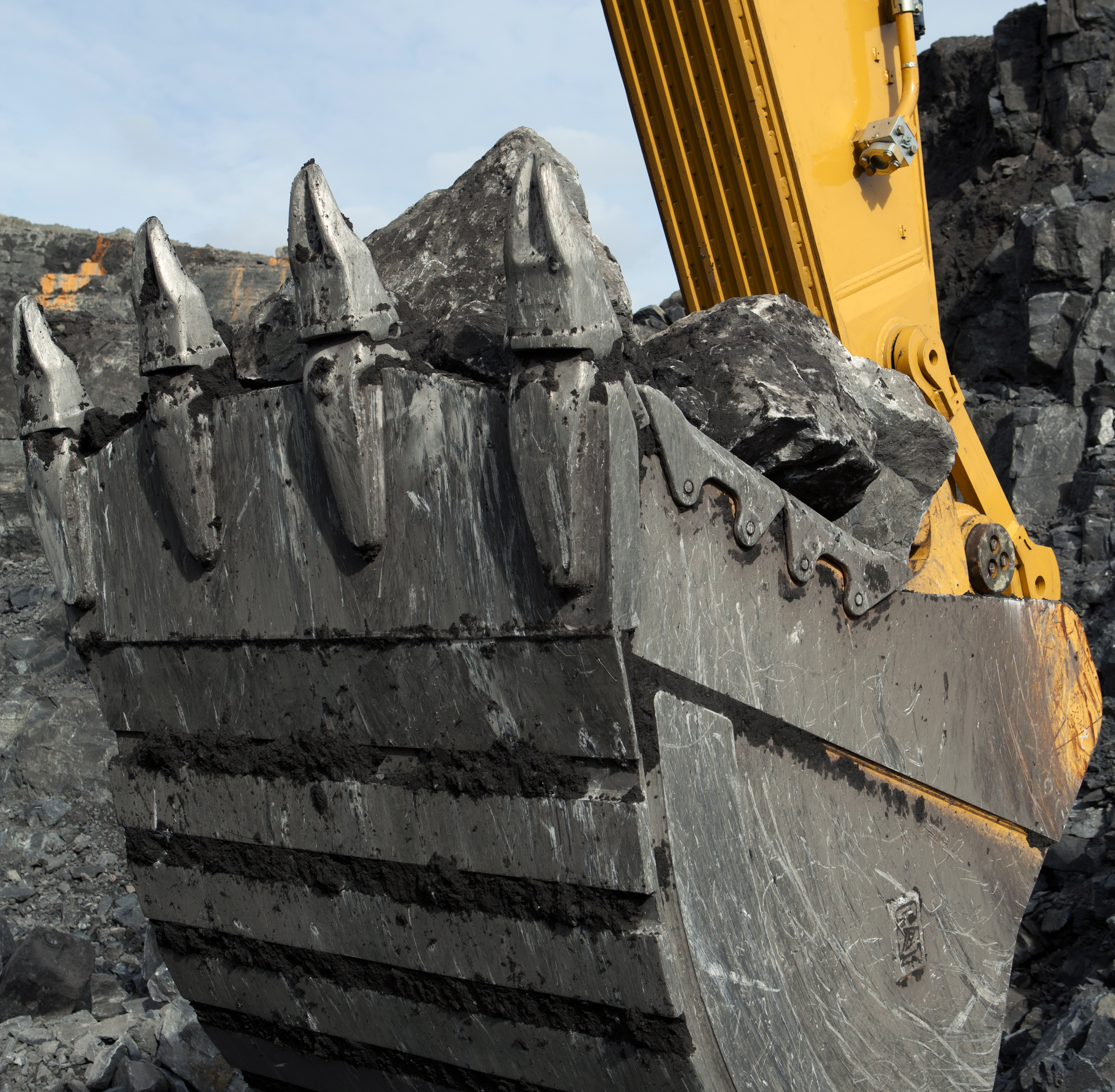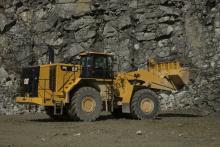
Choosing the right bucket and ground engagement tools for your hydraulic excavator and wheeled loader can result in huge financial savings and productivity gains in your aggregates processing operation. Guy Woodford spoke to two experts from U.S. quarrying and mining equipment giant Caterpillar to find out more.
Quarrying is a numbers game. You can have the best aggregates products on the market but if your production costs are too high, your bottom line suffers, along with your business’s long-term viability.
The correct pairing of bucket and ground engagement tools (GET) with your quarry hydraulic excavator or wheeled loader can generate some very impressive numbers.
For example,
Meanwhile, Rob Godsell, Caterpillar’s GET specialist, says Cat Advansys next-generation hammerless GET for 988-994 Cat wheeled loaders or 349-390 Cat hydraulic excavators deliver peerless productivity and faster and safer installation and removal times. Bucket tips are said to last up to 30% longer than average quarry industry standard tips, with bucket tip change downtime also cut by
50-75%. Furthermore, Advansys GET system bucket adapters are said to have up to 50% longer life than general quarry industry standard bucket adapters.
Ground engagement tools include the bucket tips and adapters, the sidebar protectors and the main front edge of the bucket. These GET components allow the bucket to penetrate more effectively and protect the main structures. The GET penetration capability affects a machine’s productivity and fuel efficiency. Rob Godsell says that Caterpillar has conducted controlled production studies that show that by merely changing the profile of the bucket tips on a Cat 980 wheeled loader, the machine was able to move 6% more material per hour, and 8% more material per litre of fuel burned. Selecting the right and sharp engagement tools improves productivity and should not be neglected, especially when investments in GET are negligible compared to the fuel costs of, say, a machine in moderate abrasion conditions.
“The right equipment selection is a key consideration to optimise fuel efficiency together with other factors such as idle time, operator technique, the use of technology and the jobsite set-up,” explains Verstegen. “Bucket and GET selection are part of the equipment selection process. Choosing the wrong bucket or GET will reflect on productivity and fuel consumption.
“The bucket type, durability and capacity are considerations when matching with the machine, the application and the material. Face-loading applications, with an excavator or a wheeled loader, require different buckets than re-handling crushed material. Buckets for face loading are of robust design, often with a spade edge and teeth to maximise penetration and withstand high break-out forces. Re-handling buckets are designed for easy loading of stockpiled material and often have a higher capacity to carry the maximum amount of material without spillage. Using the wrong bucket for the application could lead to
a machine that is not optimised for the job and to bucket failures.”
The durability of the bucket is often defined by the amount of wear plates or by the wear resistance of steel types used on the body of the bucket. If a bucket is not durable enough, downtime to add wear material and change the engagement tools can be expected. However, buckets can also be overprotected and this adds a lot of dead weight, sometimes up to two tonnes, says Verstegen, reducing output and increasing fuel burn. There is clearly a trade-off between bucket life and productivity/fuel efficiency.
“In addition, bigger is not always better. Bigger buckets have a longer floor or a bigger tip radius, and consequently operators spend more time in the pile or quarry face to get a good fill level. This burns more fuel and increases the loading cycle duration, as demonstrated by our own productivity studies. Long-term use of over-capacity buckets can lead to fatigue failures in the base structure of the wheeled loader or excavator.”
Most fuel is consumed through bucket loading during the loading cycle and the GET profile together with the correct bucket is paramount to optimise machine productivity and fuel efficiency. Godsell explains: “Our productivity studies with a Cat 992 wheeled loader have shown that tips can have as much as a 17% impact on fuel efficiency. GET selection usually stems from experience and expectations, and should be followed by continuous monitoring and analysis of machine productivity over the GET lifetime. Accompanying boneyard analysis can also reveal insights such as the operator technique.
“Conventional GET change-outs can be a dangerous operation. There are a lot of GET systems out there where you must use hammers or pry bars to change them. With the new Cat Advansys system, you just have a standard half or three-quarter inch breaker bar, two locks that rotate either side of the tip, and when unlocked the tip comes straight off.”
“With many years’ experience designing and manufacturing wheeled loader and excavator buckets for all kinds of applications, we know that the ‘one-size-fits-all’ principle doesn’t always apply,” says Verstegen.
“Customers can order customised buckets for very specific applications and it can also be something as simple as wanting an additional adapter or tip or some additional wear protection.”
Verstegen says most aggregates processing customers are already giving some consideration to their loading model bucket selection.
“You need to really know your material type and application very well. Customers, especially larger quarry and aggregates handling company operators, talk about their experience of loader buckets, and that helps us in helping them choose the right one for their applications. The bucket size and weight do play a big role in the overall productivity and fuel efficiency.”
Godsell adds: “We carry out productivity testing across a range of applications and configurations so we can learn, refine our products, and continue to lead the industry. Tests take place in our proving ground facilities and at customer sites.” Cat Payload Measurement (CPM) on wheeled loaders and excavators is making it easier for customers to continuously monitor their machine’s output level and to refine their GET selection thanks to precise productivity data.
The use of computer software and smart phone applications to accurately predict customer fleet machine maintenance needs is becoming increasingly common among original equipment manufacturers (OEM) dealerships, and among some customers themselves.
Godsell concludes: “Within the last couple of months, we have introduced a new part to our existing excavator or dozer undercarriage wear-monitoring application that allows dealers to measure bucket and GET wear, while also calculating and offering predictions on how long the bucket and GET will last. It’s something we initially developed for our dealers working with mining customers, who are using 100tonne class loaders and shovels, but it will still be applicable for smaller models used in quarries. We are currently optimising this part of the software to allow for its wider use.”






